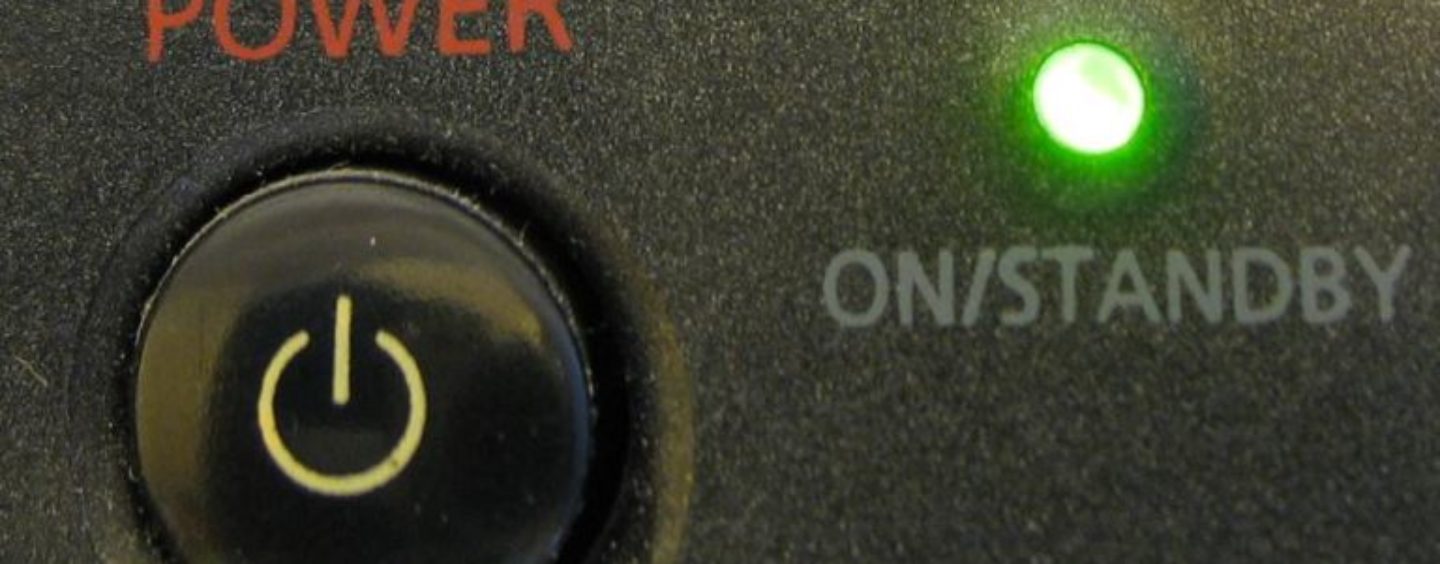Standby functions (e.g. remote control activation of a television set) and off mode losses (occurring when a product cannot be switched off completely when providing no service/function) are a common feature of electrical and electronic household and office equipment (consumer electronics, information and communication technology equipment, personal care products, etc.) these days. But do we know how much electricity costs they run up ?
Necessary evil
Widespread use of electronic household and office equipment leads to important overall electricity consumption related to standby/off mode. However, if applied appropriately, standby functionally saves electricity by providing a way to switch equipment into a reduced power consumption mode compared to the “active” mode that uses much more power. Thus to optimize power consumption, a product does need standby and off mode but with minimum power consumption and judicious usage.
In general consumer electronics, white good and office equipment compete on highly price sensitive markets. However, users are often unaware of consumption and costs of standby/off mode power, since they are small for a single product, and therefore an unimportant purchasing criterion.
Sizable problem
However, a typical household is equipped with dozens of such products and the resulting energy consumption and costs add up to a significant amount. A microwave oven for example eats up more electricity for its digital clock than for heating food. Sure, heating a meal takes over a 100 times the energy needed to run a clock, but most ovens are in standby mode over 99% of the time. This is true of TVs, DVD players, computers, audio systems and a host of other devices that spend much of their lifespans eating power in standby mode.
By 2020, approximately 4.6 billion products will feature a standby option, consuming about 50TWh of electricity per year. To put it in perspective, this is equal to the total electricity consumption of countries like Greece or Portugal. Between 5 to 15 percent of residential electricity used in OECD counties is due to power consumption in standby mode. Learn more from the consumer guide published by the SELINA project (Standby Energy Losses in New Appliances .)
Tackling the issue
Technical solutions that reduce energy consumption in standby/off mode are frequently not applied due to additional manufacturing costs that could be passed on to the customer. However this slightly higher purchasing price could easily pay off as standby power savings for the user over the long run.
While several EU Member States have been conducting campaigns to encourage better “switch off habits” and purchase of equipment with low power consumption in standby and off mode, these efforts are difficult and time consuming. Attempting to minimize impacts on instrument functionality, affordability, safety, environment friendliness while balancing industry competitiveness, administrative burden and technology monopoly the Ecodesign directives laid out a 2 stage plan to reduce off mode and standby mode power to 0.5W and 1W respectively.
Impact on industry
To reach the goals outlined in the Ecodesign directive and other standards established by international bodies appliance manufacturers have to prove that their products comply with standards from bodies like IEC or European Commission and products have to often meet complex and stringent specifications and carry energy efficiency labels to show that they meet requirements.
This means that equipment manufacturers will need to measure power consumption across a wide operating range – from the milli-Amperes encountered at standby levels to the tens of amperes used in induction hobs for example. Accurately and reliably measuring power consumption and efficiency is essential not just for compliance to standards but also to guarantee product quality and consistency.
Beyond standard measurements
Because of increased regulatory emphasis on power quality, engineers now need to go beyond voltage, current and power measurements – and assess harmonics and frequency based parameters. Equally important, particularly in production environments, are ease and flexibility of use to ensure that employees at all skill levels are able to operate the instruments. For greater productivity and quality control particularly it is often essential to automate production tests. This makes it necessary for a measurement instruments to have a robust communications interface that allows interactions with PCs and other instruments to create an automatic test systems.
Learn more about accurate measurements of standby power and how appropriate software can aid this.



No Comments so far
Jump into a conversationNo Comments Yet!
You can be the one to start a conversation.